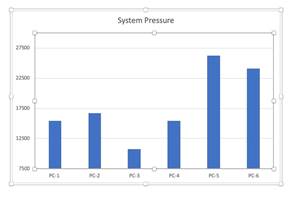Tier 1 Automotive Molder Uses Team Approach to Mold Simulation
Processor Strategies
SRG Global calls in outside assistance to solve a tricky technical problem.
SRG Global Inc., based in Warren, Mich., is a Tier 1 and Tier 2 automotive injection molder and one of the world’s largest suppliers of chrome-plated plastic parts. It has hundreds of injection presses and 4500 employees at 17 locations in the U.S., Mexico, Europe, Japan, and China. Yet SRG Global knows when to call in outside assistance to solve a tricky technical problem.
The case in point was an appliqué for the rear liftgate of a minivan. SRG Global took on an existing tool for the job about a year ago and saw right away that it could present problems. The 2.2-lb ABS panel was 56 in. long x 7.5 in. wide, with a nominal wall thickness of 3 mm. The potential for warping was immediately apparent, recalls Marlon Anderson, global director of tooling engineering. The automotive OEM customer required the appliqué to be flat and to fit precisely between the minivan’s taillights, mating perfectly with mounting points on the liftgate during vehicle assembly. It also had to be free of sinks.
SRG Global addressed the problem the way it does with 99% of its tools—it ordered a mold simulation analysis. The company tools up around 200 new projects a year, but it has only one seat for Autodesk Moldflow analysis. “We do around 60 analyses a year ourselves,” says Anderson, “so we go outside for the rest.”
Since 2006, SRG Global has gone to CAE Services Corp. in Batavia, Ill.. Anderson says he relies on CAE Services because of its extensive experience in Moldflow analysis, performing over 1000 analyses a year. “That kind of volume and experience gives us confidence and fast turnaround,” Anderson notes. Equally important to him is the vendor’s knowledge of injection molding—he cites the fact that CAE Services has its own injection machines to test out its simulation predictions. And, after performing some 400 to 500 Moldflow analyses for SRG Global, “They understand our processes.”
The initial Moldflow simulation of the minivan appliqué showed potential for warpage to leave an 11-mm gap in the middle of the panel, tapering to 2 mm at the corners. It had a five-drop hot manifold with each hot drop feeding a single J-shaped “shovel” gate on the same edge of the part (see Baseline Gating image). Even though all drops opened simultaneously and flow was relatively even across the part, the warpage was excessive. CAE Services engineering manager Jake Wittman, who worked on the project, said the difficulty was that “we had to fix an existing tool and we couldn’t make major changes in order to keep cost under control.”
Tim Lankisch, CAE Services director of engineering, says one of Moldflow’s strengths is helping to determine the primary cause of the predicted warpage. Here the causes were packing and shrinkage variations caused by the filling pattern. Anderson recalls that between the fifth and tenth simulation runs it became clear that process changes would not fix the problem and that the number and location of the hot drops needed modification.
It took 49 simulations to arrive at the solution, which was to sequence the filling from four drops on the original side to four more drops on the opposite side, used for packing only (see CAE Recommended Gating image). This reduced overall warpage to 4.1 mm in the critical direction, a 63% reduction. And the molded parts lived up to the simulation predictions.
Related Content
How to Achieve Simulation Success, Part 2: Material Characterization
Depending on whether or not your chosen material is in the simulation database — and sometimes even if it is — analysts will have some important choices to make and factors to be aware of. Learn them here.
Read MoreSoftware Suite Creates Integrated Workflows for Optimizing Moldmaking
Eastec 2025: The HxGN Mould and Die Suite includes VISI, WORNC, NCSIMUL and datanomix tools to provide an integrated workflow from design/engineering to manufacturing and automation.
Read MoreFront-End Mold Simulation Software Simplifies and Streamlines Design
SimForm by Maya HTT highlights its front-end mold simulation software as a solution for mold designers and tooling managers.
Read MoreRead Next
Making the Circular Economy a Reality
Driven by brand owner demands and new worldwide legislation, the entire supply chain is working toward the shift to circularity, with some evidence the circular economy has already begun.
Read MoreFor PLASTICS' CEO Seaholm, NPE to Shine Light on Sustainability Successes
With advocacy, communication and sustainability as three main pillars, Seaholm leads a trade association to NPE that ‘is more active today than we have ever been.’
Read More









